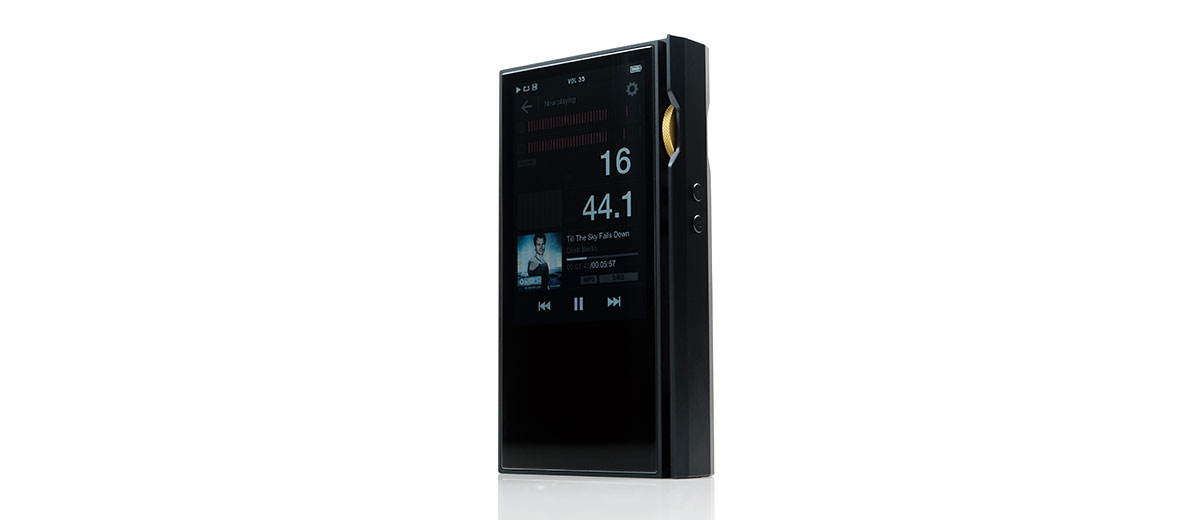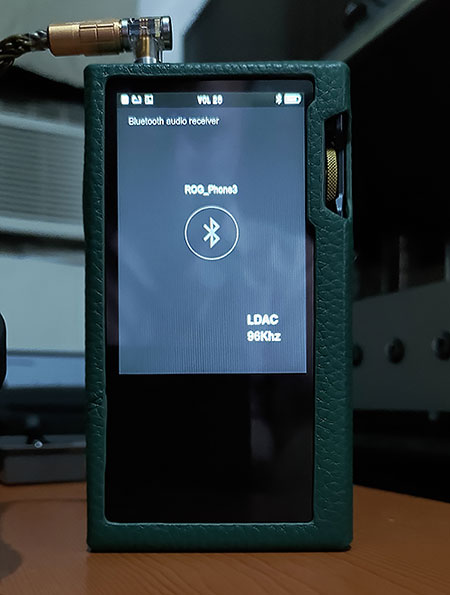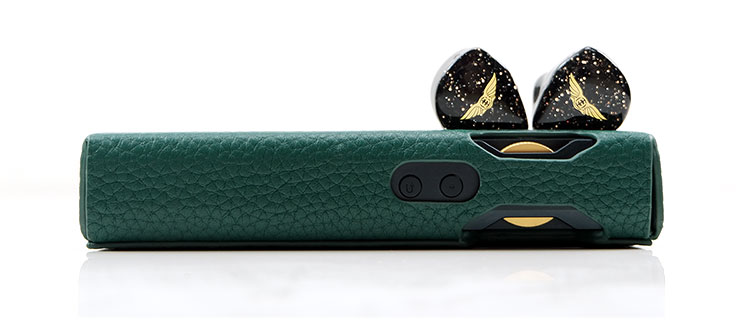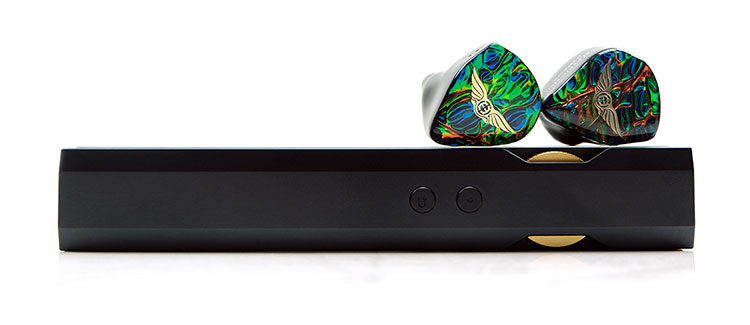P6 Pro Sound Impressions
Summary
The P6 Pro has taken that wonderful almost analog and life-like tone of the P6 and injected it with a huge boost in the dynamic range giving it a greater sense of urgency, a more vivid performance if you will.
Everything that is truly wonderful about the P6 is still there. That means the fantastic level of detail in note texture, brilliant low-end definition and weight, and a life-like and immensely likable high-frequency reproduction.
However, add to it now a midrange performance that has superior separation, a harmonic balance that tilts slightly less to the warm and euphonic, and a faster transient response from our paired monitors and headphones.
The sound is now natural to slightly neutral, perhaps more aggressive than I was expecting but it truly brings to life any monitor’s vocal presence without adding unwanted harshness or nasty digital artifacts.
Previously, I mentioned that delta-sigma was excellent at painting a broad picture of music, in how they seem to manage everything outside of the note so well, such as staging complexity. And that the P6 instead focuses on discovering amazing detail within the note, or within the texture if you will.
Now, the P6 Pro can do both. The superior dynamic range creates a much better sense of space, and a more holographic soundstage to compete with all but the most ethereal competing sound signatures.
Timbre
This has still all the hallmarks of an R2R timbre with its excellent body, liquid-like attack but not the overall timbral tone has gone from warm and smooth to natural and spritely.
The P6 Pro instrumental and vocal timbre still lacks the delta-sigma gloss on individual notes so that wonderful grit and character remain resolutely clear with each note’s strike, particularly so with dynamic drivers. However, this time the harmonic balance is more accurate to my ear rather than erring to the euphonic side with the P6.
That does not mean the instrumental tone is muted or analytical. In fact, quite the opposite because of that enhanced dynamic range and stronger bass fundamental, notes are more bombastic and high energy in their delivery meaning they sound anything but dull or soft.
I had mentioned before how well the P6 dealt with the character of violin plucks and how it could easily tease out any intentional roughness as the string hits the bow. Now imagine that pluck with more vibrancy, more thrust if you will, and a slightly better physical impact.
This does not come at the cost of a ‘brighter’ treble. It still sounds perfectly balanced but this time a bit more lively and not quite as relaxed as the original P6. It does help a lot with a stronger perception of clarity through the P6 Pro’s midrange, one that is not quite matched by the softer P6 tone.
Staging
The P6 Pro retains the original’s penchant for a natural or a live concert performance vibe but this time the soundstage has not so much got huge, rather it is a lot more accurate and immersive.
Vocals if anything, sound more forward and physical than before but with better separation from supporting instruments. The blacker background of the P6 Pro delivers a much more complex staging quality but one that is also clearer and easier to interpret in terms of imaging and nuanced spatial cues.
That little lick of upper harmonic presence also provides just enough sparkle to pick out those cues far quicker than the more compressed and softer-sounding P6 staging performance.
The low-end sounds more defined, with a slightly shorter decay from our tested monitors and definitely improved layering. In turn, the improved dynamic range strengthens the fundamental so PRaT is more convincing on the P6 Pro compared to the P6.
Treble airiness and headroom have very much improved on the P6 Pro but it still not the star of the show. There is still a minor but natural-sounding upper treble fade giving it an airier taller soundstage overall compared to the P6.
Bluetooth Sound
First things first, you will not need quite as much volume-boosting in BT mode using the P6 Pro compared to the P6. You should get to a comfortable listening level around 10 steps lower in low-gain balanced on the P6 Pro with our example tested monitor, the EE Odin.
Second, as with the previous P6 review, nothing less than LDAC is worth it for BT playback on the P6 Pro. Not only does it open up the soundstage with improved headroom and treble sparkle but it takes advantage of the better overall dynamic range the P6 Pro can offer. aptX at a pinch if needed but anything lower is a waste of a great DAP.
Tonally, you are also going to hear a little less mid-bass bloom and a stronger upper-mids and vocal presence using LDAC compared to the original P6’s Bluetooth sound signature. The P6 retains a sweet tone but the overall mids sound comparatively softer and warmer with a little less clarity.
The dynamic range does take a hit, but that should be unsurprising given just how excellent the wired performance is. The killer low-end that sounds softer and less impactful and little imaging clues such as a peripheral finger click not grabbing my attention as much.
Wireless Performance
Pairing
Since the P6 Pro operates only as a receive pairing on most BT capable sources is straightforward. Simply turn on BT inside the Advanced settings on the P6 Pro, activate pairing from the source, and wait until the “P6Pro” pops up during scanning and click pair.
On smartphones this was almost immediate though on my Win 10 laptop it took a while though I blame Windows more than the P6 Pro for the delay.
On Windows, it will be labeled with a speaker icon but classified as a music receiver. Win 10 will deliver up to aptX for decoding whilst most Android phones will give you a higher quality LDAC connection.
Once playback starts it will give you an information screen displaying codec and bitrate but you can use the command button to get out of that screen and make other adjustments in the P6 Pro menu if needed without breaking the BT pairing.
Stability & Range
The P6 Pro range has not really changed since my time spent with the original P6. Using LDAC I can get about 9m away from a smartphone transmitting before signal quality gets a bit patchy and starts dropping out.
Downgrading to SBC I can go the full 10m-11m that I usually get with an average TWS setup though to be honest the level of resolution and dynamic range from a non LDAC signal is not up to par for my tastes.
Latency
The latency on the P6 Pro BT connection is really very good but only when you change the USB Delay setting to ‘short delay’ and not ‘long delay’. With it connected wirelessly to a Windows 10 Acer laptop using high bitrate media files, I could not detect any looseness in the audio sync with the short delay option.
YouTube and Netflix were also excellent performers for audio sync, unlike TWS which can show a little frustrating lag in lip-syncing on platforms where audio sync tools are not available.
P6 Pro Synergy
Efficiency
The noise floor from the P6 to the P6 Pro just got lower with an even more impressive black background from the original that provides for a fantastic level of dynamic range with both IEM and compatible headphones alike.
You might not think that claim for an additional 2dB on the SNR means much but with IEMs like the Andromeda 2020 and even less efficient monitors like the JH Audio Jolene, the P6 Pro sounds far more lively than its predecessor.
The one interesting quirk of its fantastic level of silence is the jump from 0 to 1 on both balanced and unbalanced with sensitive IEMs. At zero, you get nothing, not one iota of background his, and whilst you get the same lack of hiss going up the volume steps, the jump from zero to 1 is as gradual as I had expected. It is a manageable but fair-sized jump.
The jump on the original P6 was there also but the gain or output level on the P6 Pro seems high so what sounds comfortable at balanced low-gain 10 on the P6 sounds quite loud on the P6 Pro forcing me to drop it down to as low as 4-5 with the Campfire Andromeda 2020.
I just wonder if the current levels have been enhanced on the P6 Pro compared to the P6 and not simply down to having a better dynamic range and SRN performance.
Power
At 700mW into a 32Ω load, the P6 Pro’s balanced output is my preferred output in high-gain for most planar and more demanding dynamic driver headphones. The 180mW into 32Ω single-ended output will not as well, even with moderately efficient planar headphones such as the Meze Empyrean.
700mW is still shy of the DX220 MAX’s 1.7mW of power and the HiBy R8s’s 1W so it is not the most powerful out there in terms of pure voltage grunt. Having said that, up until those two models, 700mW would be a very acceptable level of power for most DAPs so things do change quite quickly for media player tech specs.
IEM Pairings
Two categories of monitors that pair really well with the P6 Pro, dynamic driver hybrids, and those deliver that excellent midrange vocal presence.
Now, if your monitor has a slightly vague midrange the P6 Pro will do better than most. If your monitor is slightly hard-edged on its attack, perhaps metallic sounding on the treble, the P6 Pro can soften that just enough to sound a lot more natural also.
Midrange Presence
For example, on the JH Audio Jolene, I find the vocal timbre and presence to be slightly relaxed and somewhat rounded in tone, especially when you use the bass module with a high setting.
Now with the competing DAPs, (see page 4), such as the R2R2000 or even the previous P6, the performance will not tease out a particularly vibrant vocal. In the case of the P6, you get a beautiful euphonic tone and wonderful textured detail but it remains relaxed. With the R2R2000, it kind of dips, sounds clean enough but a bit diffuse in imaging.
With the P6 Pro, the vocal harmonic balance has better accuracy but still quite natural as well as the body of the notes offering more physicality and presence. In fact, the entire midrange just lept out with a very clear vocal imaging performance.
Timbral Control
Another cracking example of how well the P6 Pro can transform both the midrange timbre as well as synergize so well with dynamic driver hybrids is the Empire Ear’s flagship Odin.
On the low-end, the P6 Pro’s better dynamic tempo teases out a very impactful bass response but also one with excellent textured detail. The definition from that excellent dynamic range is beautiful with excellent low-end layering right down to each sub-bass growl.
On the upper-mids which is where I find the Odin to demand a more studied matching source, the P6 Pro delivers a very natural vocal tone, particularly for high-pitched falsetto and head voice mixes.
It is not as euphonic or warm as the original P6, but it still manages to stamp down on any potential sibilance emphasis and retain a very vivid sound. Quite often, brighter delta-sigma DAPs will add a bit of shine to the Odin upper-mids and rob it of a little bit of grit in the texture which produces a more digital tone to my ears compared to the P6 Pro.
Headphone Pairings
If you feel the P6 was a bit too relaxed with some headphones then the P6 Pro will remedy that. Not to forget also the current demand from the P6 Pro is deceptively good at higher gain volume levels. As mentioned in the efficiency section, I do think this particular area has improved over the P6.
For example, the Meze Empyrean sounds beautifully rich and smooth with the P6 also offering decent headroom. However, with the P6 Pro, the mids get a bit of a lift with a stronger vocal presence combined with a more dynamic low-end presentation. You will also get a better sense of space with a blacker background and improved headroom over the P6.
I also think the Pro Pro has an edge on the previously reviewed HD660s/P6 pairing, particularly in the treble performance which I felt was a little too relaxed with the P6. The P6 Pro teases out a little more treble energy, and on the low-end, a stronger sense of PRaT.
Vocals in particular have a better balance and stronger imaging performance with the P6 Pro over the original warmish charm of the P6. I still think you can get more out of the HD660s with a desktop amp with more voltage swing but the P6 Pro never left me feeling that it sounded compressed or flat in its delivery.
Click on page 4 below for Select Comparisons.






